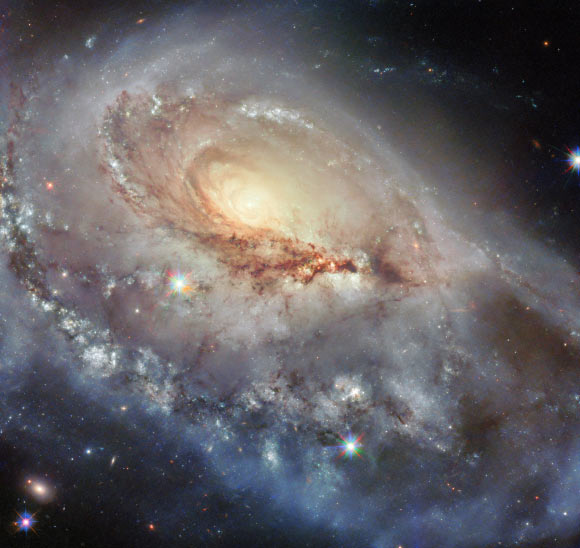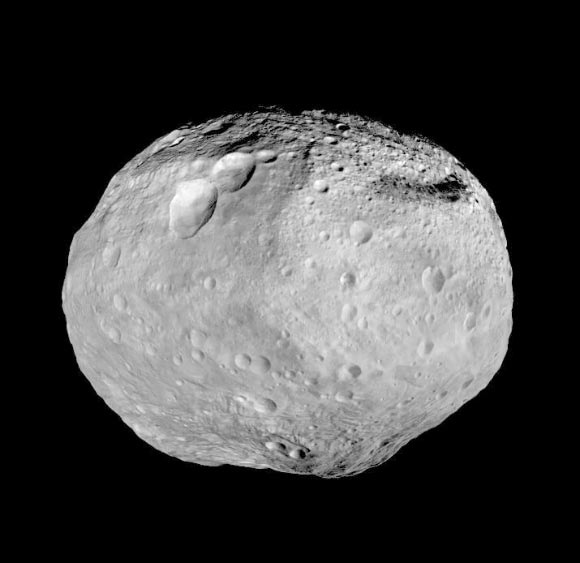The Hubble team has released a stunning new image snapped by the NASA/ESA Hubble Space Telescope of the massive spiral galaxy NGC 1961.
This Hubble image shows the spiral galaxy NGC 1961. Image credit: NASA / ESA / Hubble / J. Dalcanton / R.J. Foley, UC Santa Cruz / C. Kilpatrick.
NGC 1961 is located approximately 190 million light-years away in the constellation of Camelopardalis.
This spiral galaxy is 240,000 light-years across and is the largest member of a small group of ten galaxies.
NGC 1961 was discovered by the German-British astronomer William Herschel on December 3, 1788.
The galaxy was also observed by the French astronomer Guillaume Bigourdan on December 22, 1891, causing it to be listed in the Index Catalogue as IC 2133.
NGC 1961 displays a perturbed form, which led to its classification as Arp 184.
“The name Arp 184 comes from the Atlas of Peculiar Galaxies, which was compiled by astronomer Halton Arp in 1966,” the Hubble astronomers said.
“The 338 galaxies in the atlas are oddly shaped, tending to be neither entirely elliptical nor entirely spiral-shaped.”
“Many of the galaxies are in the process of interacting with other galaxies, while others are dwarf galaxies without well-defined structures.”
“Arp 184 earned its spot in the catalogue thanks to its single broad, star-speckled spiral arm that appears to stretch toward us,” they explained.
“The galaxy’s far side sports a few wisps of gas and stars but lacks a similarly impressive spiral arm.”
The new image of NGC 1961 includes optical and near-infrared observations from both Hubble’s Advanced Camera for Surveys (ACS) and Wide Field Camera 3 (WFC3).
“This Hubble image combines data from three Snapshot observing programs, which are composed of short observations that can be slotted into time gaps between other proposals,” the astronomers said.
“One of the three programs targeted Arp 184 for its peculiar appearance.”
“This program surveyed galaxies listed in the Atlas of Peculiar Galaxies as well as a Catalogue of Southern Peculiar Galaxies and Associations, a similar catalogue compiled by Halton Arp and Barry Madore.”
“The remaining two programs were designed to check up on the aftermath of fleeting astronomical events like supernovae and tidal disruption events — when a star is ripped apart after wandering too close to a supermassive black hole.”
“Since Arp 184 has hosted four known supernovae in the past three decades, it’s a rich target for a supernova hunt.”

























